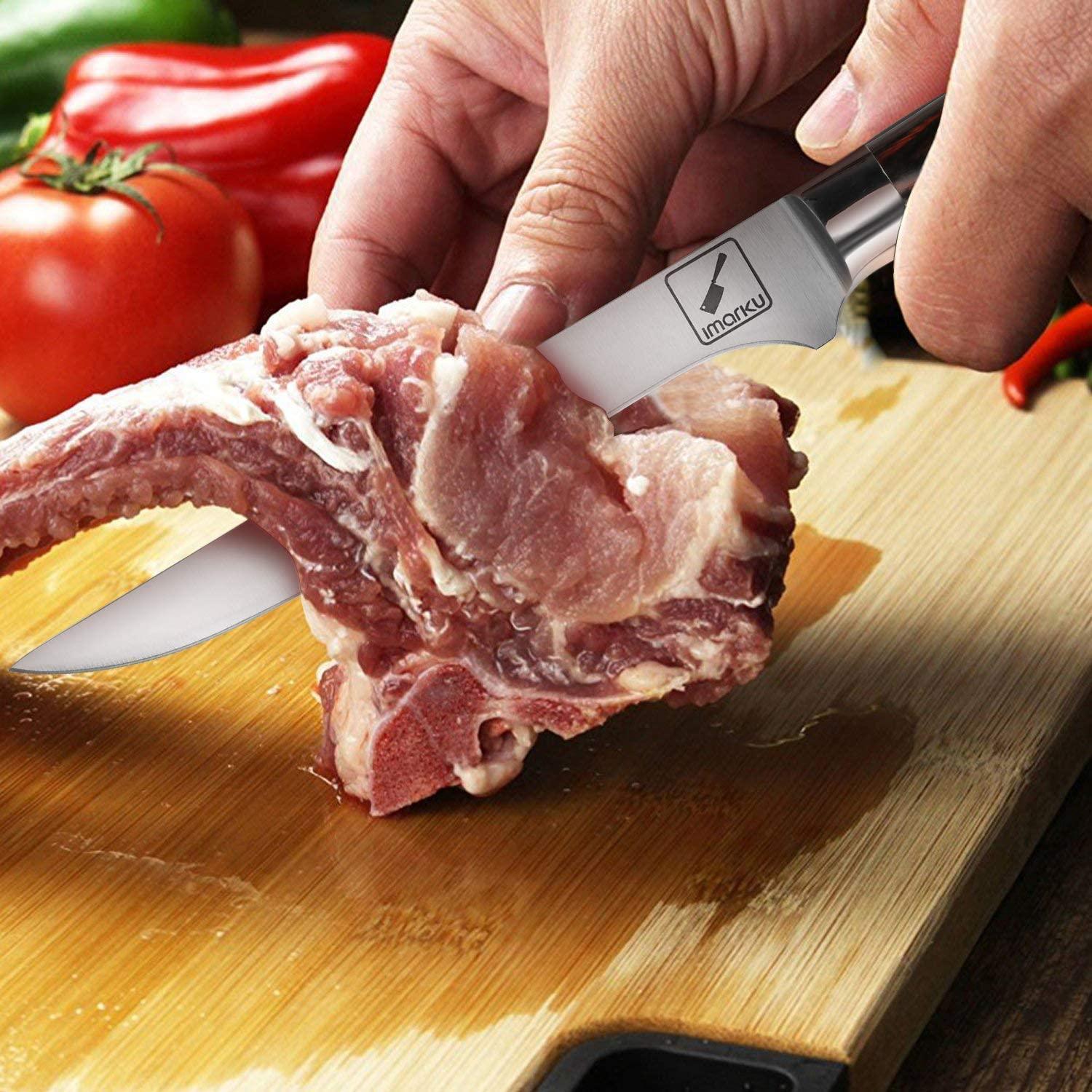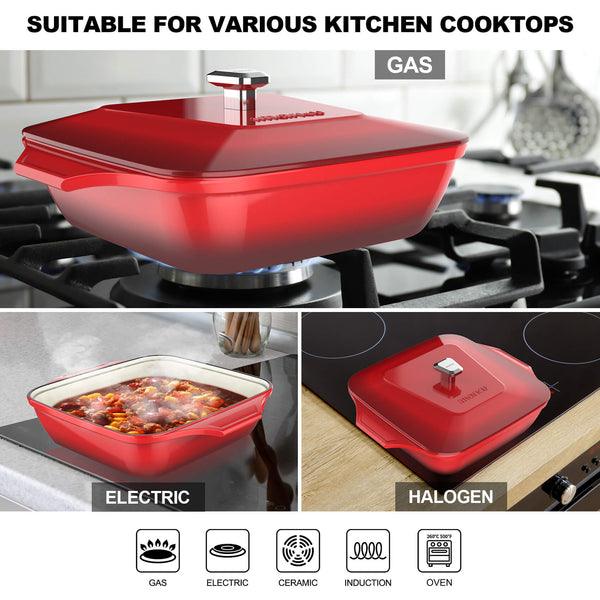TABLE OF CONTENTS
A good fish fillet knife should be efficient in its delivery. It should provide proper grip, comfort and flexible angle of operation, also ensure better leverage. So handle type, material, and design type are all crucial.
What Makes a Good Fish Fillet Knife?
Handle Type
The type of fish fillet knife handle determines how comfortable it will fit in your hand. It should be noted that the handle is one of the core factors to consider when choosing a device with a blade. Its delivery will depend on how comfortable and firm your grip is.
The best thing about choosing handle type is that it all depends on personal preferences. There are three types:
• Wood - it's the most popular type of handle due to its sturdiness and holding comfort. However, wood is usually slippery when it's wet.
• Plastic - it's quite easy to clean. Most people love it because it provides a better grip than wood, but it's more fragile compared to wood.
• Rubber - it's a great alternative to wood, especially if you are looking for a knife that offers a better grip and is easier to clean. However, it falls short when it comes to sturdiness.
Length of the Blade
It's common for many people to overlook the blade length, especially when they are already comfortable with the type of handle. But this feature is very important because the blade gets the job done. Once you have used the knife and felt that it suits you, it's because the handle and blade align with your needs.
A fish fillet knife should have a good blade length that offers more flexibility and convenience. Generally, you need a device that's generally long to handle large fish. If you are worried about the length of the blade, here is an overview of what to consider depending on the type of fish:
• 4 to 6-inch blade: Mackerel, Trout, Perch, and Pink Salmon
• 7 to 8-inch blade: Salmon and Pink Salmon
• 8 to 9.5-inch blade: Catfish, Tuna, Halibut, and Codfish
Note: for efficiency, it's advisable to have 2-3 different blade sizes so that you can effectively prepare different types of fish.
Type of Material
Materials influence the sharpness and durability of the knife. Fillet knives need to be generally sharp and durable since they will most likely be exposed to saltwater that can easily result in rusting. Besides that, durability is an important factor since such a knife will be frequently used during fishing expeditions.
Therefore, the best type of fillet knife should be made of stainless steel that's durable and resistant to rust. Consider picking a high-carbon stainless steel knife that will guarantee you lasting durability and a lasting sharp edge.
Blade Design
This is where flexibility and sharpness come to play. For better control and ease of use, choose a fillet knife with a thin and flexible blade. This is important in improving the precision of the cuts. You won't get the best results with a thick blade since this would mean that you would lose control and precision.
A combination of a thin blade with a sharp edge is even better. When choosing your cutter, go for a knife with a blade angle that ranges between 12 and 17 degrees. This is the right angle for creating finer bevels.
What is the Best Knife for Filleting Fish?
Even though there is a wide range of fish fillet knives, Deba Knife by imarku takes the top spot for professionalism and delivery. It has been designed with premium features that guarantee ease of you as you cut through fish.

Deba Knife 7" Fish Fillet Knife- Key Features
• Premium design materials for durability and retained sharpness
• Single bevel knife with a 12-to-15-degree angle that provides a versatile method of operation
• Ergonomically-shaped handle for comfort and firm support
• 56-58 HRC hardness level with a 6.5" blade length
It has been specifically designed for fish cutting. The Japanese product is made with an ultra-sharp blade to maintain a high level of precision. It's also wide enough, and a blend of these features makes it suitable for processing while fish. This includes filleting, gutting, breaking bones, and cutting heads among others.
Its ergonomically shaped rosewood handle offers a unique aspect of elegance and vintage. Its handle comfortably fits in hand while its design helps improve any kitchen's esthetics regardless of the interior design. This creates a superb environment that allows you to enjoy cooking even more.
For a left-handed person, a single bevel might be a tragedy. But you don't have to worry about that since this is a high-end knife that has been professionally designed to offer the same incomparable benefits of a double bevel knife.
With a German high-carbon stainless steel material, this Deba fillet knife offers value for money. Its precision is guaranteed since the 5Cr15Mov stainless steel material ensures that the knife's sharpness is retained for a lasting period. Besides that, it's easier to sharpen a stainless-steel blade since it isn't susceptible to rust.
It's made with the traditional single bevel design that makes it ideal for use by experienced artisans and newbies. This cutter has a bevel angle that ranges between 12 and 15 degrees, and this makes it possible to smoothly and sharply slice through the fillet's surface. Separating the bones from the meat is easier thanks to the blade's anti-sticking design with a well-ventilated upper layer that retains meat quality.
Overall, you will love the efficiency that it adds to the kitchen. Its management is easier as well since this is a knife that's fast and easy to clean. But to ensure that you protect this knife's glossiness and you retain its sharpness, don't wash it in the dishwasher. Simply dry it immediately after handwashing and store it in a cool, dry place. If you are looking for an all-around cutter, this is one of the best fillet knives you can rely on.
What's the Difference Between a Fillet Knife and a Boning Knife?
From their names, these two types of knives have different functionalities; hence their design features are definitely different. But they also have a few overlapping similarities.
A fillet knife is normally used to separate fish meat from the bone and skin. It's ideal for preparing fish. On the other hand, a boning knife is used to separate meat from the bone. This makes it ideal for cutting through connective tissues, muscles, sinew, and fat. This type of knife is what gets the job done in butcheries. While these two knives are sometimes used interchangeably, a fillet knife is designed with fish in mind.

Blade weight and length
Filter knives are generally lighter in construction and design than their boning counterparts. The blade tends to be thinner, although the range is between 4 and 9.5 inches. It's also worth noting. Meanwhile, the length of boning knives usually ranges between 5 and 8 inches. This knife is also heavier.
Blade design
Both are designed with prominent curves, but there is a slight difference between them. A fillet knife's blade features a more pronounced curve that faces upward. Its curved tip allows for steady and long cuts. Meanwhile, a boning knife tends to have a straight tip that can be sharpened to pierce easily through the meat.
Maneuverability
A fillet knife is generally more flexible. Its maneuverability is enhanced with a blade that supports easier cuts through meat, bones, and skin. This allows for more precise cuts, especially when handling delicate meats such as fish. On the other hand, a boning knife's maneuverability profile is quite rigid since it's designed to handle tougher meats with more muscles and connective tissues.
What Kind of Knife Do You Use to Cut Fish?
If you are a fisherman or a fish lover, you need to consider the best knife for cutting fish.
Generally, your basic chef's knife can get the job done. But you will put a lot of effort, and by doing this, you might end up damaging the fish's delicate meat. A boning knife is also good, but its rigid structure makes it difficult to make long and smooth cuts without stressing through the fish's meat.
Ultimately, the best knife for cutting fish is the fillet knife. Such a knife has been designed to cut fish and remove bones. There is a wide range of such knives on the market with different designs, shapes, and sizes. However, choosing a blade cutter such as imarku's 7-inch Deba Knife can be one of the best decisions you will ever make.






















Leave a comment
All comments are moderated before being published.
This site is protected by hCaptcha and the hCaptcha Privacy Policy and Terms of Service apply.